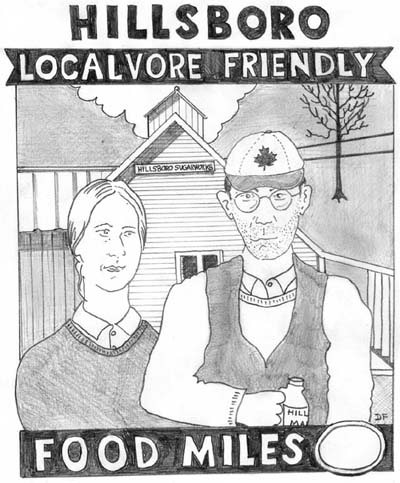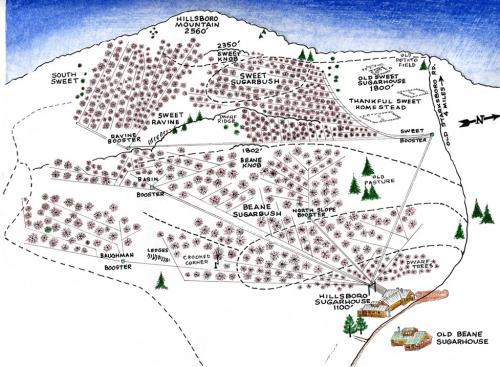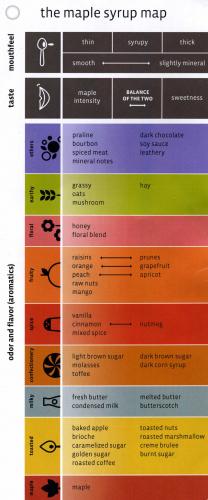A Season's Worth of Maple Syrup
We’ve just gotten the fresh crop maple syrup on our shelves!

I called Sue Follino at Hillsboro Sugarworks to find out how their season went this spring. Hillsboro has over 14,000 taps in their family’s sugar bush down in Bristol. Sue reported they had a great season – she thinks they may have set a record for the length of the season – they just finished boiling on Monday!

A map of the 14,000 taps of Hillsboro
I’m eager to taste this season’s crop after going to The Taste of Place workshop presented by UVM Nutrition and Food Science Professor Amy Trubek, during the NOFA Winter Conference in February.
Amy’s recent research has been around the ‘terroir’ (or taste of place) maple syrup – a concept traditionally applied to wine! Her big picture theory is that the flavor of syrup is influenced by the type of bedrock and soil beneath the sugar bush – that taste is influenced by the landscape that produced it.

The Maple Syrup Map
Amy handed out this Maple Syrup Map which I carried around for the rest of the conference, showing just about everyone I talked to.
By conducting hundreds of maple syrup tastings (tough job, eh?), Amy was able to distinguish 9 categories of maple odor and flavor (maple, toasted, milky, confectionary, spice, fruity, floral, earthy, and others). As your sipping the spring crop of syrup, note which of these categories the maple flavor fits into. The descriptive words then further flesh out each category (for example, if I’m tasting syrup with a milky flavor, I might find I can further describe it as a ‘fresh butter’ taste or a more intense ‘butterscotch’ taste.)
So come in, get some of the spring crop, and then do your own ‘tasting’. Amy offers the following tips for How to Taste Maple Syrup:
- Smell the syrup before tasting. Try to identify any distinct flavors. Take a look at the list of the “Aroma” sensory descriptors if you need a guide.
- Take a small sip of the syrup. Hold it in your mouth briefly, and make a note of the texture. See the “Mouthfeel” section for suggestions.
- Assess the degree of intensity. How does the flavor of this syrup compare to others you’ve tried? The “Taste” section has some suggestions for describing these qualities.
- If possible, taste with a friend and share your reactions with them. Sometimes discussing your experience with another person can help trigger memories and associations.
By beginning to describe maple syrup in the language of flavor, aroma, and mouthfeel, we might see value added marketing opportunities arise for our sugar makers – can you imagine a ‘vintage’ year for maple syrup or having a farmer produce earthy maple syrup for roasting glazes while producing confectionery syrup for pancakes? My mouth is already watering imagining the descriptive language on the maple syrup jugs!
Happy tasting!